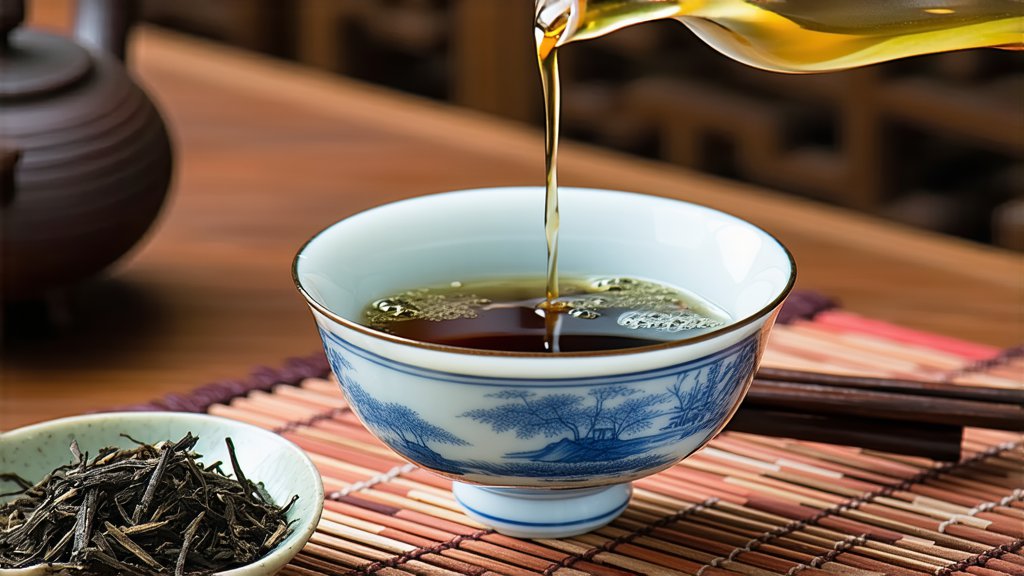
Pu-erh tea, a revered variety within the expansive universe of Chinese black teas, holds a unique position in both historical and cultural contexts. Its origins trace back to the ancient tea-growing regions of Yunnan Province, where the combination of geography, climate, and centuries-old practices have cultivated a tea that is as much a part of the land as it is of the people who cherish it. This article embarks on a journey through the rich tapestry of Pu-erh tea, exploring its history, varieties, production process, and the intricate art of its appreciation.
A Glimpse into History
The story of Pu-erh tea begins in the mists of time, with legends suggesting its cultivation dating back over 2,000 years. It gained prominence during the Tang Dynasty (618-907 AD) and became an integral part of the Silk Road trade, reaching as far as Tibet and Central Asia. Over centuries, Pu-erh evolved not only as a beverage but also as a symbol of cultural exchange and diplomacy. Its significance deepened further during the Ming (1368-1644) and Qing (1644-1912) Dynasties when it was designated as tribute tea for the imperial court, solidifying its status among the finest teas in China.
Varieties and Characteristics
Pu-erh tea is broadly categorized into two types based on processing methods: Raw Pu-erh (Sheng) and Ripe Pu-erh (Shou). Each type undergoes a distinct post-fermentation process, resulting in unique flavor profiles and aging potential.
-
Raw Pu-erh (Sheng): This variety undergoes natural fermentation over time, with its character gradually transforming due to microbial activity and oxidation. Young Sheng teas are typically bright and astringent, with a fresh, vegetal aroma that mellows into more complex notes of earthiness and sweetness as it ages. The aging process can span decades, with each year adding depth and smoothness to the tea's taste.
-
Ripe Pu-erh (Shou): In contrast, Shou tea undergoes a controlled fermentation process known as "wo dui," which accelerates the aging process. This method involves piling the tea leaves in a humid environment, encouraging the growth of beneficial microorganisms that contribute to its distinctive dark color, rich aroma, and full-bodied flavor. Ripe Pu-erh is often described as having a smooth, mellow taste with hints of earthiness, woodiness, and sometimes a subtle sweetness.
The Art of Production
The production of Pu-erh tea is a meticulous craft that encompasses several stages:
-
Picking: Only the top one or two leaves and the bud are hand-picked during specific seasons to ensure optimal quality.
-
Withering: Freshly picked leaves are spread out to wilt under the sun or in shade, reducing moisture content and softening the leaves for rolling.
-
Rolling: The withered leaves are then rolled into tight spirals or twisted shapes, which helps release juices and initiate enzymatic reactions.
-
Drying: The rolled leaves are dried either naturally in the sun or using hot air to halt further enzymatic action.
-
Fermentation: For Sheng tea, the leaves are compressed into cakes, bricks, or other shapes and stored in ventilated environments where they age naturally over years. Shou tea undergoes the wo dui process, where piles of tea are kept moist and warm to encourage microbial activity, followed by drying and aging.
-
Compression: Many Pu-erh teas are compressed into various forms such as cakes, bricks, or pu-erh tuocha (single servings), which not only facilitate storage and transport but also contribute to the tea's unique aging characteristics.
The Appreciation of Pu-erh Tea
To truly appreciate Pu-erh tea is to engage in a multisensory experience that transcends mere consumption. Here's a guide to savoring this ancient brew:
-
Preparation: Start by selecting high-quality loose leaves or well-preserved compressed tea. Use a Yixing clay teapot or a Gaiwan for optimal flavor extraction. Rinse the leaves briefly with boiling water to 'wake' them up.
-
Brewing: Steep the tea in water just off the boil (around 95-100°C/203-212°F) for about 5-10 seconds for the first infusion, then gradually increase steeping time for subsequent infusions. Pu-erh tea is known for its ability to be re-steeped multiple times, each revealing new layers of flavor.
-
Observation: Admire the tea liquor's color, which ranges from amber to deep brown depending on the type and age of the tea. Note any changes across infusions.
-
Aroma: Inhale deeply before sipping to detect the tea's evolving fragrance, which may include notes of camphor, aged wood, earth, and subtle fruitiness or floral undertones.
-
Tasting: Take small sips, allowing the tea to coat your palate fully. Pay attention to its body, texture, and complexity. Sheng teas often start with astringency that mellows into sweetness, while Shou teas offer a rounder, more immediate comfort.
-
Aftertaste: Notice the lasting impression left in your mouth after swallowing. A good Pu-erh should leave a pleasant, lingering aftertaste that invites reflection.
Health Benefits and Cultural Significance
Beyond its sensory pleasures, Pu-erh tea has long been celebrated for its potential health benefits. Rich in antioxidants, polyphenols, and other bioactive compounds, it is believed to aid digestion, promote cardiovascular health, regulate blood sugar levels, and support weight management when consumed as part of a balanced lifestyle. Moreover, its tradition of communal sharing fosters social bonds and mindfulness practices akin to meditation.
In conclusion, Pu-erh tea stands as a testament to China's profound connection with nature and its enduring commitment to preserving traditional arts. From the ancient tea gardens of Yunnan to modern tea tables around the world, this venerable beverage continues to captivate hearts and minds, inviting us all to slow down, savor the moment, and connect with a legacy that spans millennia.